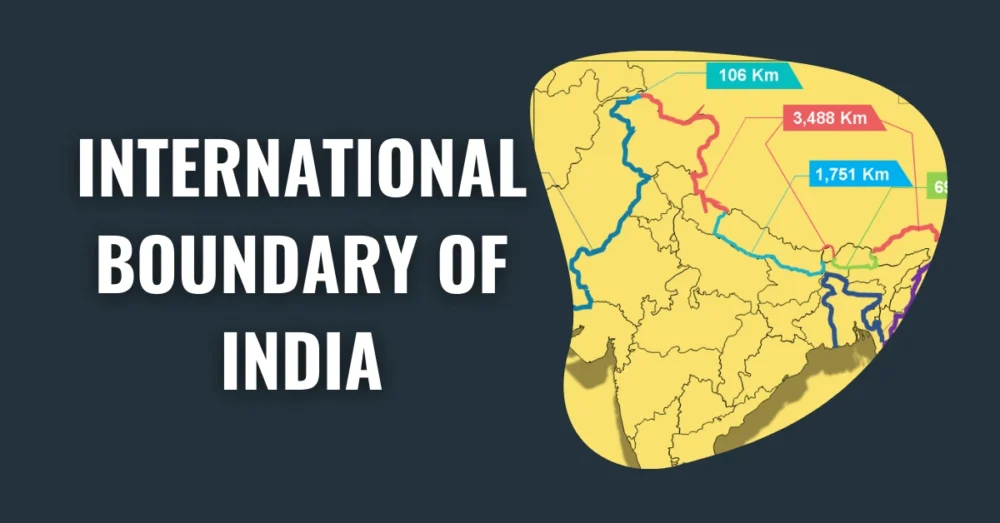Millets are small, fast-growing grains that thrive in warm climates. Known for their resilience, they grow well in dry, infertile soils and are perfect for drought-prone areas. Millets are a key part of dry-land farming, requiring minimal resources and offering great nutritional benefits. In this article, we’ll explore various types of millets in India, such as Jowar (Sorghum), Bajra (Pearl Millet), Ragi (Finger Millet), and Barley. We’ll also discuss their ideal growing conditions, production, and distribution across the country.
About Millets
- Millets are short-duration crops (3-4 months) with small grains and thrive in warm climates. They belong to the grass family.
- They are cultivated in less fertile regions and are highly tolerant of drought and extreme weather conditions.
- Millets need minimal external inputs and serve as the foundation of dry-land farming.
- Known for being highly nutritious and non-acid-forming, millets are considered a valuable food source.
- With their high fibre content, millets provide health-promoting and nutraceutical benefits, making them an essential food option for underprivileged communities.
🔰Don’t Miss: List of Agricultural Revolutions in India [1960-2024]
Types of Millets in India
The types of millets cultivated in India include:
- Pearl Millet (Bajra) – Known for its drought resistance and high nutritional value.
- Finger Millet (Ragi) – Rich in calcium and adaptable to a variety of soil types.
- Sorghum (Jowar) – A versatile crop used for food and fodder, thriving in arid conditions.
- Foxtail Millet (Kangni or Rala) – Distinguished by its small, golden grains and high fibre content.
- Little Millet (Kutki) – Known for its small grains and nutritional richness, often used in traditional dishes.
- Barnyard Millet (Sanwa) – Commonly used during fasting, valued for its high fibre and mineral content.
- Kodo Millet (Kodo) – Notable for its ability to endure harsh climates, rich in essential minerals.
- Proso Millet (Cheena) – Frequently used as bird feed and a food source in many cultures.
🔰Don’t Miss: All Static GK Topic Lists
Some of these millets are explored in detail in the following sections.
Jowar (Sorghum)
- Nutritional Value:
Jowar is highly nutritious, rich in protein, fibre, thiamine, riboflavin, folic acid, and carotene. Its proteins are less digestible compared to other cereals when cooked, which can be beneficial for specific dietary needs.
Growth Conditions
- Jowar thrives as a rainfed crop in dry farming regions.
- It is grown as both a Kharif and Rabi crop.
- Requires areas with less than 100 cm of rainfall.
- Clayey deep regur and alluvial soils are ideal for its growth.
- It can also be cultivated on gentle slopes up to an altitude of 1,200 meters.
Production and Distribution
- Maharashtra (38%) and Karnataka (20%) are the leading producers of Jowar in India.
- Other significant producers include Tamil Nadu, Rajasthan, Andhra Pradesh, and Uttar Pradesh.
Bajra (Bull Rush Millet)
- Significance:
Bajra is the second most important millet, with a history of cultivation dating back to prehistoric times in Africa and the Indian subcontinent.
- Adaptability:
- It is highly suited to drought-prone regions with low soil fertility and high temperatures.
- Thrives in soils with high salinity or low pH.
- Uses:
Like Jowar, Bajra serves as both food and fodder, particularly in arid and dry areas of the country.
Growth Conditions for Bajra
- Bajra is primarily a rainfed Kharif crop grown in dry and warm climates.
- It thrives in regions with 40-50 cm of annual rainfall, with an upper limit of 100 cm.
- Suitable soils include poor, light sandy soils and black and red soils.
- Bajra is often sown as a pure crop or in combination with cotton, jowar, and ragi.
Production and Distribution of Bajra
- Rajasthan is the leading producer, contributing 45.22% of the total production in India.
- Other major producers include Uttar Pradesh (2nd), Haryana (3rd), and Gujarat (4th).
Ragi (Finger Millet)
- Significance:
Ragi is a staple crop in the drier regions of Southern India, especially in the drier parts of Karnataka.
- Nutritional Value:
Ragi is one of the richest sources of calcium, offering 300-350 mg per 100 grams.
- Growth Conditions:
- Ragi thrives in warm climates with 50-100 cm of annual rainfall.
- It can grow in a variety of soils, including red soils, light black soils, sandy soils, and well-drained alluvial loams.
- It is a rainfed Kharif crop, typically sown between May and August and harvested between September and January.
Growth Conditions for Ragi
- Climate and Rainfall:
Ragi thrives in warm climates with 50-100 cm of annual rainfall. It is best suited for drier regions, performing well in conditions that are neither too wet nor too dry.
- Soil Requirements:
Ragi grows on a variety of soils, including red soils, light black soils, sandy soils, and well-drained alluvial loams. Proper drainage is essential to prevent waterlogging.
Production and Distribution of Ragi
The leading Ragi-producing states in India are Karnataka, Maharashtra, Uttarakhand, Tamil Nadu, Andhra Pradesh, Jharkhand, Odisha, Chhattisgarh, and Gujarat.
Barley
- Overview:
Barley is a significant cereal grain grown extensively in temperate regions worldwide.
- Historical Significance:
Barley is one of the earliest domesticated grains, cultivated for nearly 10,000 years, particularly across Eurasia.
- Uses:
- Widely used as animal feed.
- Serves as a fermentable material for making beer and certain distilled beverages.
- An essential ingredient in various health foods.
- A crucial component in the production of beer and whisky.
Growth Conditions for Barley
- Climate Requirements:
Barley does not tolerate high heat or humidity. It grows best in areas with 75-100 cm of annual rainfall.
- Cultivation Season:
- Barley is primarily grown as a Rabi crop in the Great Plains and valleys of the western Himalayas.
- It thrives at altitudes of up to 1,300 meters, particularly in regions like Uttarakhand.
Production and Distribution of Barley
- Over time, barley production has declined, similar to other millet crops.
- It is primarily cultivated in states such as Uttar Pradesh, Rajasthan, Punjab, Madhya Pradesh, Haryana, Bihar, Himachal Pradesh, West Bengal, and Jammu and Kashmir.
Production of Millets in India
- Geographical Distribution:
Millets are widely cultivated in several regions, with notable production in countries like India, China, and parts of Africa.
- Key Millet-Producing States:
In India, Karnataka, Rajasthan, Maharashtra, and Tamil Nadu are major millet-producing states.
- Importance for Food Security:
The production of millets is vital for food security, especially in drought-prone areas, due to their resilience to harsh growing conditions and low water requirements.
Benefits of Millets
- Nutrient-Rich:
Millets are packed with essential vitamins, minerals, and fiber, making them an excellent choice for maintaining a balanced diet.
- Drought-Resistant:
Millets are well-suited for arid and semi-arid regions, needing less water than other crops, promoting sustainable agriculture.
- Low Glycemic Index:
With a low glycemic index, millets help in managing blood sugar levels, making them a healthy option for people with diabetes.
- Versatile Use:
Millets can be used in a wide variety of dishes, from traditional recipes to modern health foods, adding diversity and nutritional value to the diet.
What is Glycemic Index?
The glycemic index (GI) is a measure that shows how quickly the food we eat raises blood sugar levels after eating. Foods with a high glycemic index cause a fast increase in blood sugar, while foods with a low glycemic index lead to a slower rise.
- High GI foods: Examples include white bread and sugary drinks. These can cause a quick spike in blood sugar.
- Low GI foods: Examples include whole grains, vegetables, and millets. These foods cause a slower, steady increase in blood sugar.
Eating foods with a low glycemic index is often recommended for maintaining healthy blood sugar levels, especially for people with diabetes.
International Year of Millets
The United Nations declared 2023 as the International Year of Millets to increase awareness and promote the cultivation and consumption of millets.
This initiative aims to:
- Highlight the nutritional benefits of millets.
- Promote their role in sustainable agriculture.
- Showcase their potential to enhance food security.
By focusing on millets, this year-long celebration seeks to encourage their integration into global food systems and improve the livelihoods of smallholder farmers.
Conclusion
Millets are essential to Indian agriculture, especially in regions facing tough environmental conditions. Their ability to tolerate drought and poor soil quality, along with their high nutritional value, makes them an important food source for many communities.
Although millet cultivation has declined over time and production patterns have changed, millets continue to play a crucial role in agriculture and the diets of millions.
Understanding the growth conditions and distribution of millets helps highlight their importance in food security and sustainability, showcasing their potential for the future.
FAQs About Millets
Millets are small-seeded grasses belonging to the Poaceae family. They are highly resilient, drought-tolerant crops that thrive in arid and semi-arid regions2. Millets are rich in nutrients, including fiber, protein, vitamins, and minerals, making them a healthy food choice.
In India, millet is commonly referred to as “Ragi” (Finger Millet) or “Bajra” (Pearl Millet).
Dr. Khader Vali, honored with the Padma Shri award, is widely recognized as the Millet Man of India.
China is the largest importer of millets from India, with an estimated $3.8 billion in imports in 2022.
India is the largest producer of millet as of 2021, with a total share of 41%, followed by Niger (~12%) and China (~8%).
Known as the ‘Queen of Millet’, Raimati Ghiuria, a tribal farmer from Odisha, has successfully preserved 72 traditional paddy varieties and at least 30 types of millets, including Kundra bati mandia, jasra, juana, and jamkoli.






